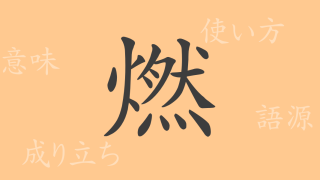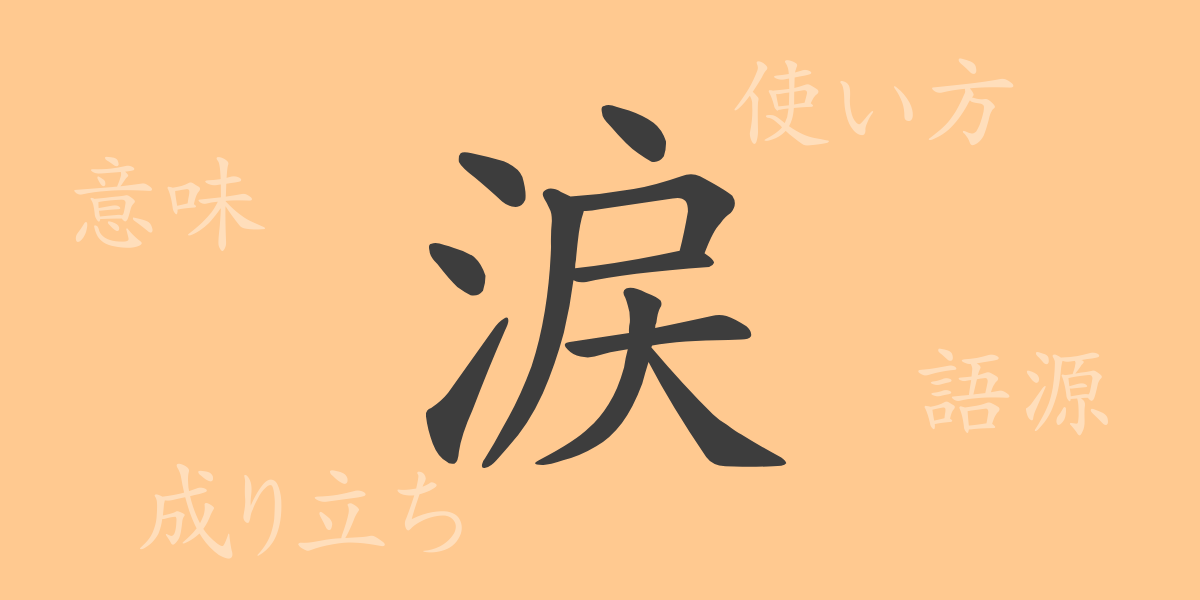The delicate nuances of emotions are vividly reflected in “tears” (namida). These small droplets that naturally flow during moments of joy, sadness, and deep emotion can deepen connections between people beyond words. However, did you know that tears are not just an expression of emotions, but behind them lies a rich history, culture, and a world of language? In this article, we spotlight the commonly used kanji “涙” (namida), delving into its origin, meaning, usage, and the charm of the word.
The Origin of Tears (語源:gogen)
The kanji “涙” (namida) consists of the radical “氵” (sanzui), which indicates water, at the top, combined with “戻” (modoru) at the bottom. “戻” (modoru) originally means “to wind up a thread,” evoking the image of liquid dripping. From this form, the expression of liquid flowing from the eyes was created, giving birth to the word “涙” (namida).
The Meaning and Usage of Tears
Tears (namida) refer to the moisture secreted from the eyes and are also used metaphorically to express emotions such as sadness and joy. For example, expressions like “涙を流す” (namida o nagasu), “涙を抑える” (namida o osaeru), and “涙が止まらない” (namida ga tomaranai) are used. Additionally, tears (namida) have a physiological role in protecting the eyes and are used in various contexts.
The Reading, Stroke Count, and Radical of Tears
How is the kanji “涙” (namida) read in Japanese, and what are its components?
- Reading: In on-yomi (音読み), it is read as “ルイ” (rui), and in kun-yomi (訓読み), it is read as “なみだ” (namida).
- Stroke Count: It has a total of 10 strokes.
- Radical: The radical is “氵” (sanzui), categorizing it among kanji related to water.
Idioms, Phrases, and Proverbs Using Tears
Idioms, phrases, and proverbs that include “涙” (namida) reflect the richness of human emotions and actions. Here are some examples:
- 涙腺がゆるむ (ruisen ga yurumu) – Easily shedding tears due to being moved or feeling sympathy.
- 涙を飲む (namida o nomu) – To endure frustration or sadness.
- 涙目になる (namidame ni naru) – To be on the verge of tears.
- 笑う門には福来たる (warau kado ni wa fuku kitaru) – A proverb meaning happiness comes to cheerful and joyful households, expressing an emotion opposite to tears.
Summary of Tears
The deep meaning embedded in a single kanji and the richness of expressions using it highlight the profoundness of the Japanese language. “涙” (namida) not only expresses our emotions but is also rooted in everyday language. When expressing emotions, why not remember the kanji “涙” (namida) with such a background and feel the weight of the word?

























